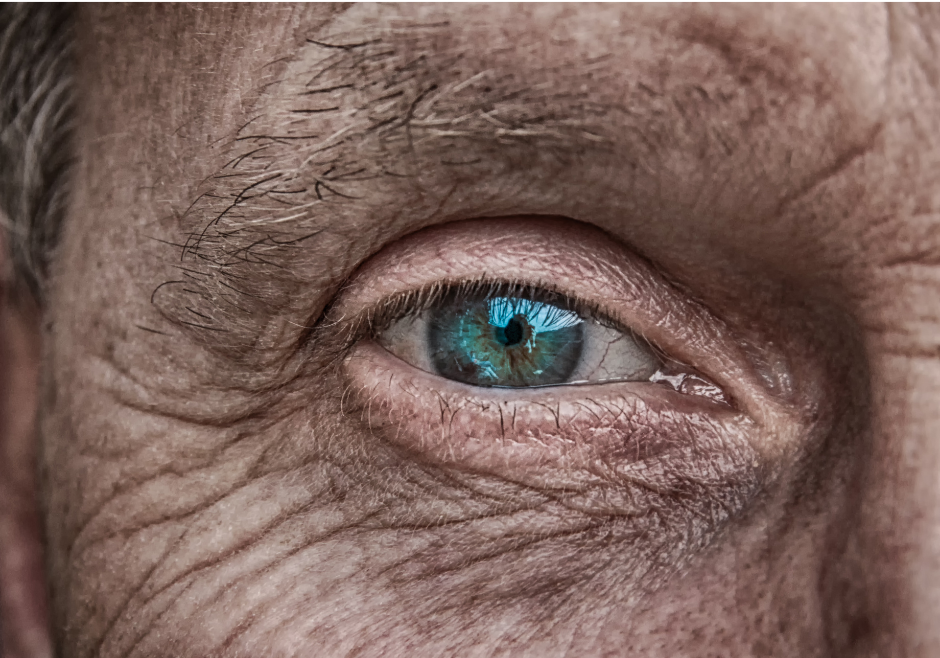Welcome to part two of this 2-part blog post on the patient-as-person domain of person-centered care. In part 1, I explored 2 theories that discuss what it means to treat the patient as a person. In this second instalment, we will look at some of the more generic characteristics that play a part in a patient’s identity and shape patient-provider interactions in the clinical encounter. It’s not as philosophical as part 1, so hopefully it will be an easier read! However, I encourage you to read part 1 prior to reading this post as some of the concepts will carry over into this writing.
As a reminder, the patient-as-person is another domain of PCC determined by Langberg et al1 in their recent systematic review. They define it as “understanding the patient’s experiences of the illness including the influence on the patient’s life situation.”1 The domain appeared in 50% of the articles in their systematic review.
Several patient characteristics have an impact on the patient experience, outcomes of care, and on the patient-provider relationship. I use the term “characteristics” to refer not only to the physical attributes of the person, but also to their experiences, social situations, their emotions, identity, etc. An understanding of these will facilitate PCC from an enactive perspective, and highlight the patient’s field of affordances, which can be used to guide care.

Demographic characteristics such as age, ethnicity and culture, education and socioeconomic status (SES) influence how the patient experiences healthcare, and therefore how the patient’s life world is enacted in the healthcare encounter. These variables have been associated with patient outcomes and the process of care.2–7 We will take a deeper dive into each of these and look at how they can affect patients’ preferences and experiences in healthcare
Age and Gender
There have been numerous studies that have demonstrated the impact of age and gender on patient preferences for care processes, and how individuals experience their environment. Younger patients are more likely to prefer shared decision-making with their HCP, and to ask for more information about their condition.4,7 Older patients and males typically prefer a more paternalistic approach to their healthcare. Women tend to report pain more frequently, and have been found to have a lower threshold than men.8
However, these are merely trends in the data, so we do need to take these with grains of salt. There is extensive variability among individuals and a woman should not be labelled as having greater pain because of her gender. These observations serve primarily to illustrate the complexity of the embodied person and the need to understand the personhood of the patient through enactivist theory.

Race, Ethnicity and Culture
There are differences in coping mechanisms, beliefs, self-efficacy, and illness perceptions among persons from different races, ethnicities, and countries of origin. Schouten and Meeuwesen5 found that the therapeutic alliance is affected by patient-doctor differences in illness perceptions; differing cultural values; cultural preferences for the patient-doctor relationship; linguistic barriers; and racism/perpetual barriers.
They showed that doctors behave less affectively with patients from ethnic minorities, and patients from such groups are usually less communicative, assertive, and affective than white patients in the clinical encounter. The authors recommended a more culturally sensitive approach in medical communication. As providers, we need to assess our biases towards or against certain characteristics and try to be mindful of these during our interactions with patients. Have you stopped to consider your biases and how they infiltrate your practice?
Viewed through the enactive lens, the patient’s field of affordances is deeply affected by cultural influences. Giordano et al6 state that “although pain is a universal human experience, biopsychosocial influences of culture can alter the development of neural systems, cognitions, and behaviors that affect the sensation of pain, its experience, and its expression, respectively.” Thus, it is crucial that we elicit our patients’ preferences for their process of care delivery. Is shared decision-making important to them? Do they prefer a private space or do they like to engage with other patients in the clinic? Do they have the social support at home to help with pain management techniques?
The world is really a global village now and chances are very high that we will interact with first- or second-generation immigrants. How an immigrant acculturates to a new country influences perceived expectations of their doctor and predicts quality of care, quality of life and health behaviors.9 For example, those who have fully assimilated into the new country’s culture experience better care and quality of life, including self-efficacy, and adherence to doctor recommendations compared to those who were poorly acculturated.
In addition, patients in low- middle income countries (LMICs) and developing nations tend to prefer a more paternalistic approach from their HCP than those from first world nations.10 In Barbados, a neighbouring island to my home island of Trinidad and Tobago, patients are more “dependent” on their HCP and hold the physician on a pedestal. This is particularly prevalent in the older population in the country.11 We may need to consider these preferences and characteristics when treating patients from the diaspora.

Socioeconomic Status (SES) and Education
These factors have a large impact on the patient’s field of affordances which influence patient preferences for care.2,4,12 Patients with low SES are more likely to prefer more humanistic physicians, while those with higher income and education, with private insurance, prefer to be more involved in the decision-making about their care.12
Low SES, food insecurity, and lack of home ownership are associated with high needs and costs in Canadian healthcare. These patients have poorer social relationships and an increased risk for morbidity and mortality.2 The field of affordances of these patients will therefore be significantly different from that of persons from higher income brackets, and similarly, their preferences for care.
Psychosocial Factors
Psychosocial factors are individual variables that also impact the person’s field of affordances. Health literacy, for example, is an increasingly acknowledged modifiable psychosocial factor that plays an important role in a patient’s self-management behaviors. It is defined as “the degree to which individuals have the capacity to obtain, process, and understand basic health information and services needed to make appropriate health decisions.”13 In a cross-sectional survey study, Wang et al13 showed that patients with diabetes with greater health literacy, had higher self-esteem and were more empowered to engage in self-care behaviors. Greater health literacy afforded these patients better self-esteem and empowerment, which led to behaviors that allowed better diabetic control.
Thus, improving health literacy can increase a person’s field of affordances. This is a valuable goal in healthcare because, according to Pincus and Castrejon,3 “95% of activities that result in lifetime differences in health status occur outside of acute care settings. Contact with health professionals generally occurs only a few hours a month at most. Outcomes depend in large part on actions of the individual, although health can be affected substantially by effective treatments and education from health professionals.” As providers, improving health literacy in patients should be part of a person-centered treatment plan. How we do this is based on patient characteristics and situations, and therefore should be individualized.
Other factors such as low self-efficacy and other yellow flag behaviors such as anxiety, fear, catastrophizing and depression, may narrow the field of affordances, resulting in poorer outcomes.14 Persons with lower illness perceptions have decreased quality of life (QOL), increased depression levels, greater pain intensity and higher disability. These lower illness perceptions are correlated to greater age, longer duration of disease and higher body mass index (BMI).15
The loss of control and lower self-efficacy in these patients can be linked to mineness and the temporal horizon that we discussed in part 1 of this blog post. Think of your patients with chronic low back pain, who have had the condition for a long time. What are their illness perceptions like and how do they feel about their ability to manage their back pain? Improving self-efficacy can foster a sense of agency and empowerment improving the patient’s ability to engage with the world and encouraging optimism about the future.16

So this ends our 2-part series on the patient-as-person. To gain an understanding about all these characteristics of our patients, we need to develop a good therapeutic alliance with them. Doing so will increase their trust in us and make them more likely to share personal information and confide in us. When this happens, we can get such valuable information that can help us deliver much more person-centered care.
I hope that this blog was informative and gave you some food for thought, especially regarding the biases we may have. Please leave a comment below or look for me on the socials if you’d like to connect!
References
- Langberg EM, Dyhr L, Davidsen AS. Development of the concept of patient-centredness – A systematic review. Patient Education and Counseling. 2019;102(7):1228-1236. doi:10.1016/j.pec.2019.02.023
- Kuluski K, Guilcher S. Toward a Person-Centred Learning Health System: Understanding Value from the Perspectives of Patients and Caregivers. hcpap. 2019;18(4):36-46. doi:10.12927/hcpap.2019.26030
- Pincus T, Castrejon I. Low socioeconomic status and patient questionnaires in osteoarthritis: challenges to a “biomedical model” and value of a complementary “biopsychosocial model.” Clin Exp Rheumatol. 2019;37 Suppl 120(5):18-23.
- Street RL, Elwyn G, Epstein RM. Patient preferences and healthcare outcomes: an ecological perspective. Expert Review of Pharmacoeconomics & Outcomes Research. 2012;12(2):167-180. doi:10.1586/erp.12.3
- Schouten BC, Meeuwesen L. Cultural differences in medical communication: A review of the literature. Patient Education and Counseling. 2006;64:21-34. doi:10.1016/j.pec.2005.11.014
- GIORDANO J, ENGEBRETSON JC, BENEDIKTER R. Culture, Subjectivity, and the Ethics of Patient-Centered Pain Care. Cambridge Quarterly of Healthcare Ethics. 2009;18(1):47-56. doi:10.1017/S0963180108090087
- Calpin P, Imran A, Harmon D. A Comparison of Expectations of Physicians and Patients with Chronic Pain for Pain Clinic Visits. Pain Pract. 2017;17(3):305-311. doi:10.1111/papr.12428
- Gutiérrez Lombana W, Esteban Gutiérrez Vidal S. Pain and gender differences: A clinical approach. Journal of Anethesiology. 2012;40.
- Whittal A, Lippke S. Investigating patients with an immigration background in Canada: relationships between individual immigrant attitudes, the doctor-patient relationship, and health outcomes. BMC public health. 2016;16:23. doi:10.1186/s12889-016-2695-8
- Sam S, Sharma R, Corp N, Igwesi-Chidobe C, Babatunde OO. Shared decision making in musculoskeletal pain consultations in low- and middle-income countries: a systematic review. International Health. 2020;12(5):455-471. doi:10.1093/inthealth/ihz077
- Xanthos C. Delivering a patient-focused health service: The views of physicians in Barbados. Health Sociology Review. 2007;16(3-4):263-278. doi:10.5172/hesr.2007.16.3-4.263
- Hirpa M, Woreta T, Addis H, Kebede S. What matters to patients? A timely question for value-based care. Fong ZV, ed. PLoS ONE. 2020;15(7):e0227845. doi:10.1371/journal.pone.0227845
- Wang MJ, Lin HM, Hung LC, Lo YT. Non-health outcomes affecting self-care behaviors and medical decision-making preference in patients with type 2 diabetes: a cross-sectional study. BMC Med Inform Decis Mak. 2020;20:74. doi:10.1186/s12911-020-1095-2
- Nicholas MK, Linton SJ, Watson PJ, Main CJ. Early Identification and Management of Psychological Risk Factors (“Yellow Flags”) in Patients With Low Back Pain: A Reappraisal. Physical Therapy. 2011;91(5):737-753. doi:10.2522/ptj.20100224
- Ünal Ö, Akyol Y, Tander B, Ulus Y, Terzi Y, Kuru Ö. The relationship of illness perceptions with demographic features, pain severity, functional capacity, disability, depression, and quality of life in patients with chronic low back pain. Turk J Phys Med Rehabil. 2019;65(4):301-308. doi:10.5606/tftrd.2019.3248
- Coninx S, Stilwell P. Pain and the field of affordances: an enactive approach to acute and chronic pain. Synthese. Published online 2021. doi:10.1007/s11229-021-03142-3






